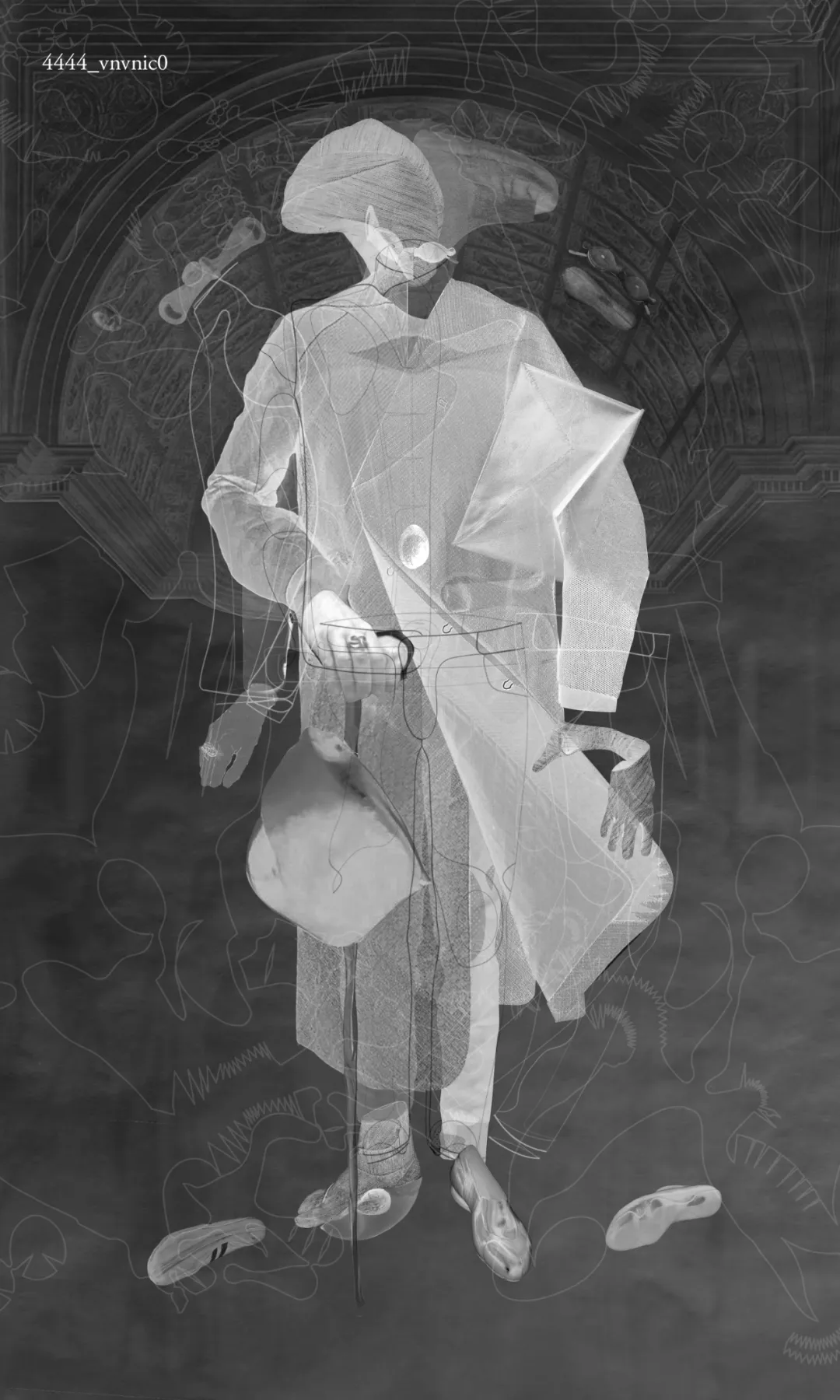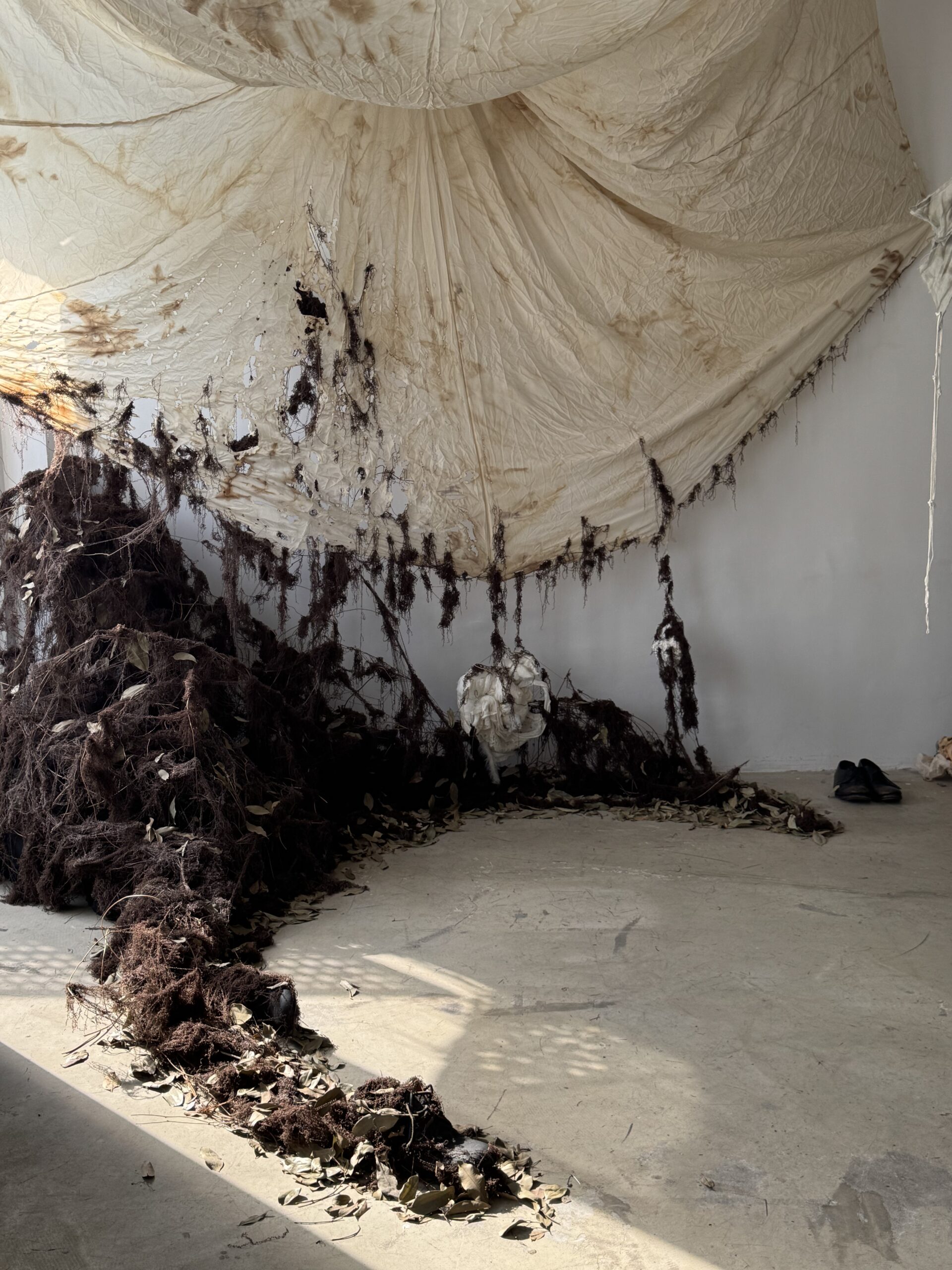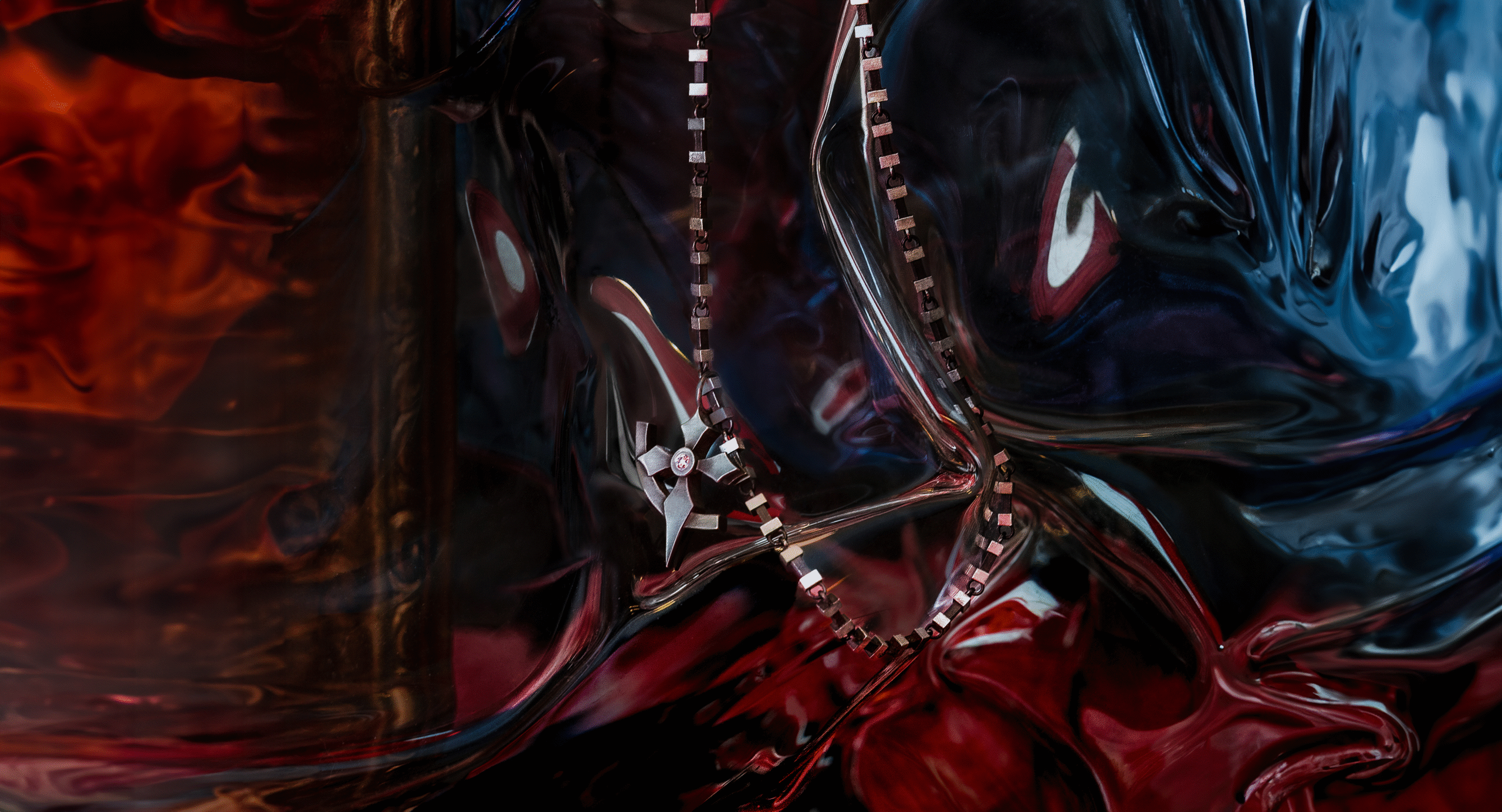After the “failure” of M_moriabc, Maurizio Altieri still developed 18 projects based on the study of topology, using a matrix of nine points (novepvnti).
These projects are based on the human figure and are strongly interconnected, forming a fully decorated “human”. In their respective production processes and methodologies, the influence of M_moriabc can be seen (only some of the preliminary or producible projects are described below, and some hidden styles and those that are still in the planning stage are not mentioned).
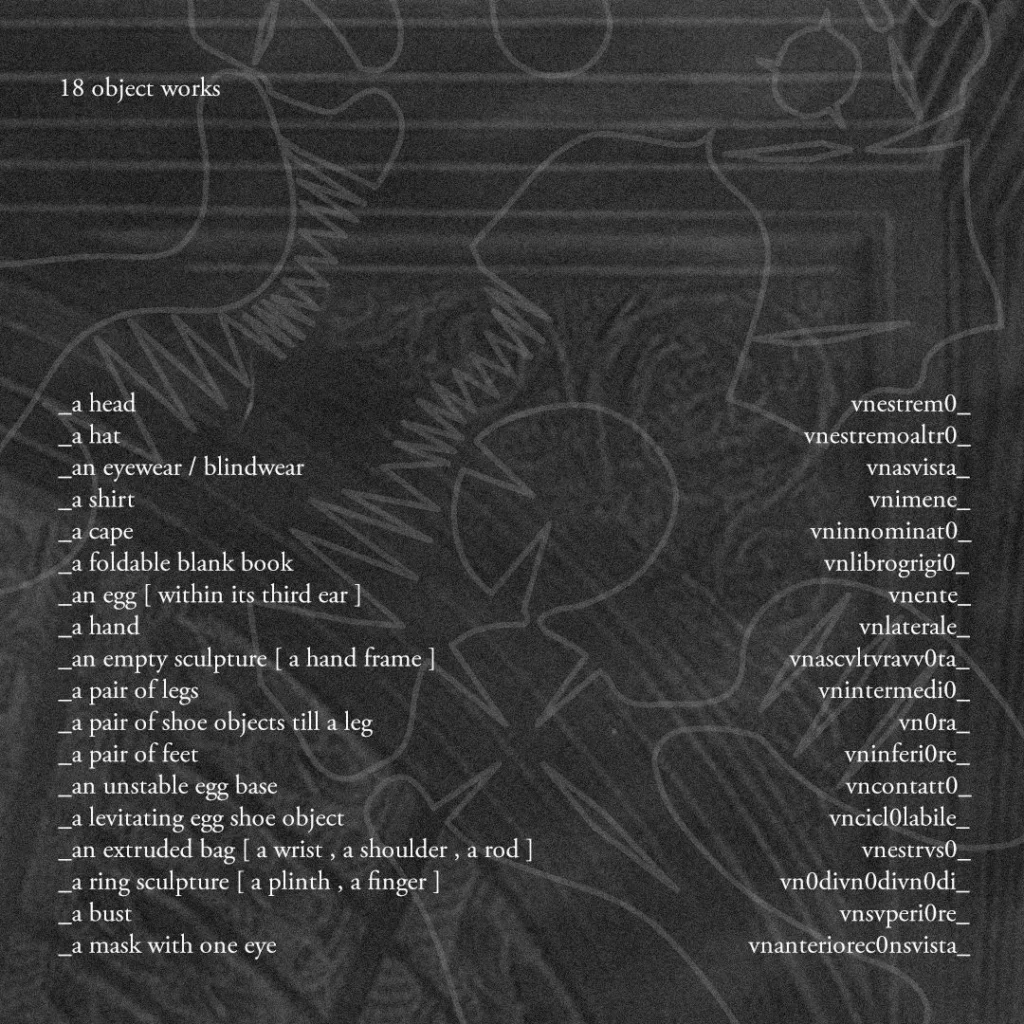
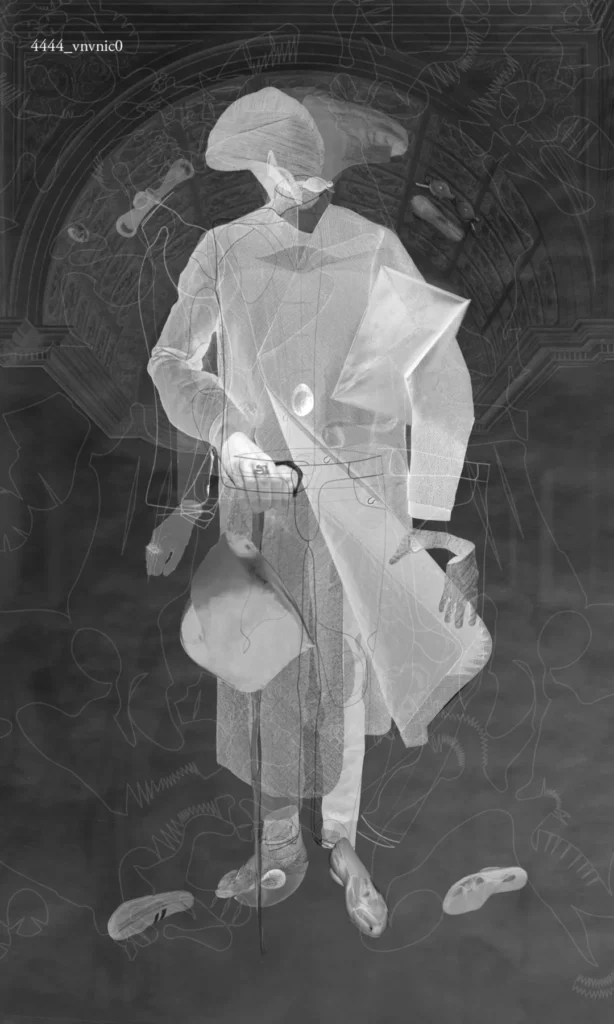
Clothing:
Vnapersona
Maurizio Altieri’s “Linea” and “Anatomic” projects from the Carpe Diem period pursue “ultimate minimalism”. With the design concept of “clothing being the second skin of the human body”, and based on this, combined with the principles of human movement, he has introduced the anatomical tailoring technique of cutting along the muscle lines. In terms of “deconstruction”, he has already achieved the ultimate.
Vnapersona (a person), which began with Altieri’s research into continuous lines in 2000 and took many years to develop, is a project that has been exhibited alongside M_Moriabc for the past decade and is still in development. Vnapersona has the same meaning of pursuing “extreme minimalism” as Linea, and is even more minimalist than the muscle anatomy of the Linea period, which cut the fabric into multiple pieces – it explores “continuity”, like “a single stroke (still in the category of topology)”, using oneself as a model, the midpoint is determined on the square fabric “The Carpet (i.e., a huge piece of denim fabric made up of multiple pieces)” and a circle is drawn around it to indicate the crotch of the pants or the position of the collar. The main body of the garment is cut directly in one go from a single line and then returns to the starting point. When cutting the garment, the irregular main body is cut directly first, and then some detailed lines are cut and sewn on, so that a three-dimensional and complete pair of pants, jacket, etc. can be obtained without any unnecessary pieces. Details such as pockets and reinforcements are achieved using the thinking behind Japanese origami. The zigzag sewing method is used, which requires zero tolerance, so that there are no seams on the belt and no seams can be found. The white circles on each piece of work originate from traditional Japanese family crests. Even if the pattern is irregular, the twill on the finished garment can be partially aligned. The ultimate “decomposition” is followed by the ultimate “merger”. There is no cutting, no asymmetrical “one-piece” design, and “a thread should always start from the end”. This is an interpretation of “from the point to the line, from the line to the surface”.
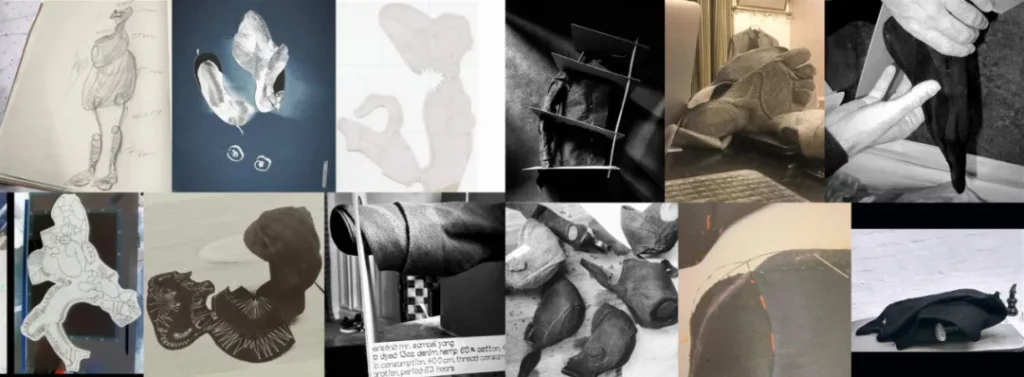
More than 4.5 meters of fabric (derived from 2,100 meters of sewing thread) were used in the entire production process. Large pieces of fabric are essential for handling complex patterns. However, the maximum width of denim fabric is only 60 inches (about 152.4 cm). Maurizio came up with a compromise solution: by connecting the fabric together, they created their own oversized denim.
This may sound simple, but using denim with a woven edge is more complicated in practice. Maurizio sews a ribbon underneath the fabric seams and sews them together, which can make the fabric more than 6m x 4m. For dyeing, they approached the well-known black dyeing studio “Kyoto Montsuki” to dye it an extreme pure black, and also explored different natural dyeing methods such as tea dye and parsimony dye.
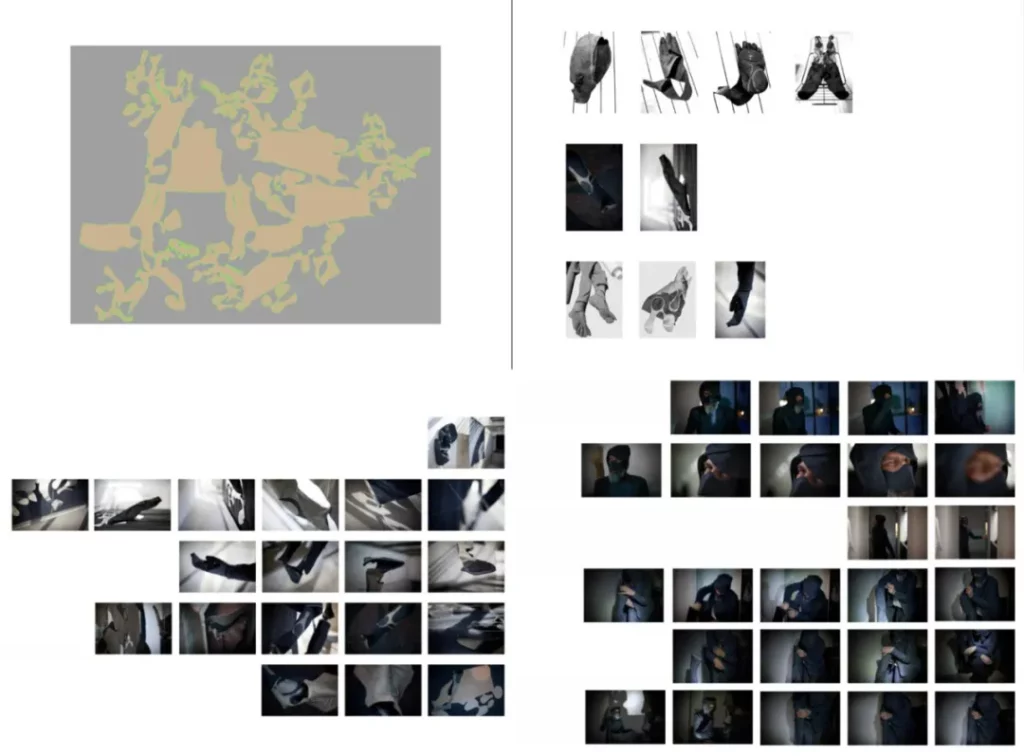
The research on Vnapersona is too large, and Altieri hopes that this project can be further improved by the efforts of many people as an “open source” project. For this reason, Vnapersona has only had scattered finished prototypes since the beginning. In 2017, it collaborated with the well-known Japanese designer Kei Kagami to promote the project, using denim fabric. The pattern was expanded from pants to tops, masks, hats, jackets, gloves, feet, etc. Starting with half of a pair of pants, the clothes were shaped like a human sculpture, with all the parts connected by a single thread from beginning to end, without any unnecessary and is ultimately made from a single piece of fabric.
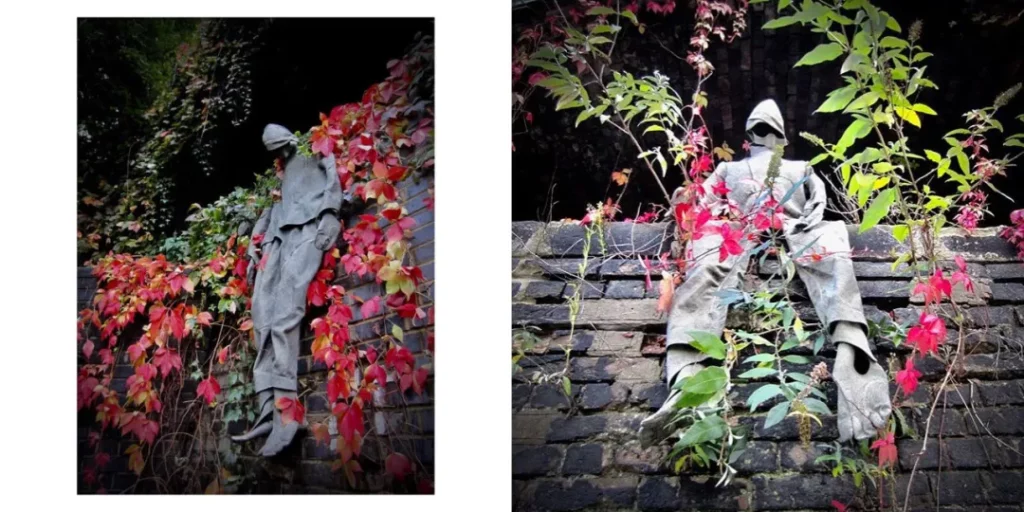
Accessories:
Vnappendice
This saddle-like Vnappendice belt bag inherits the M_Moriabc wood-carved leather and clean, perfect design language. It is made of two elliptical Horween Cordovan pieces that are reverse-molded using a mold and hidden stitches, hand-colored, and then given a matte finish. The mold is squeezed according to the dynamic posture of the human body (i.e., squeezing Altieri’s own waist), and the belt and shoulder straps are ergonomically articulated and can be curled into an egg shape.

0o0o0o
The Three-Ring Ring Sculpture Project 0o0o0o combines the round/square/triangular elements of M_Moriabc with the traditional Chinese concept of the five elements, and is sized according to Altieri’s right finger. The round ring represents the semi-finished product, the square ring represents acid treatment, and the triangular ring represents the finished product.
Metal(金): made of artificial white gold (an alloy of gold, nickel and copper), pig iron, 925 silver, yellow copper alloy, red gold (a type of 18-carat gold), etc.;
wood(木): within a frame of three discrete shapes;
water(水): translucent, slightly blue, milky quartz decoration cut into an irregular teardrop shape;
earth(土) : green jasper decoration cut into an irregular cube shape;
fire(火): obsidian decoration cut into an irregular pyramid shape.
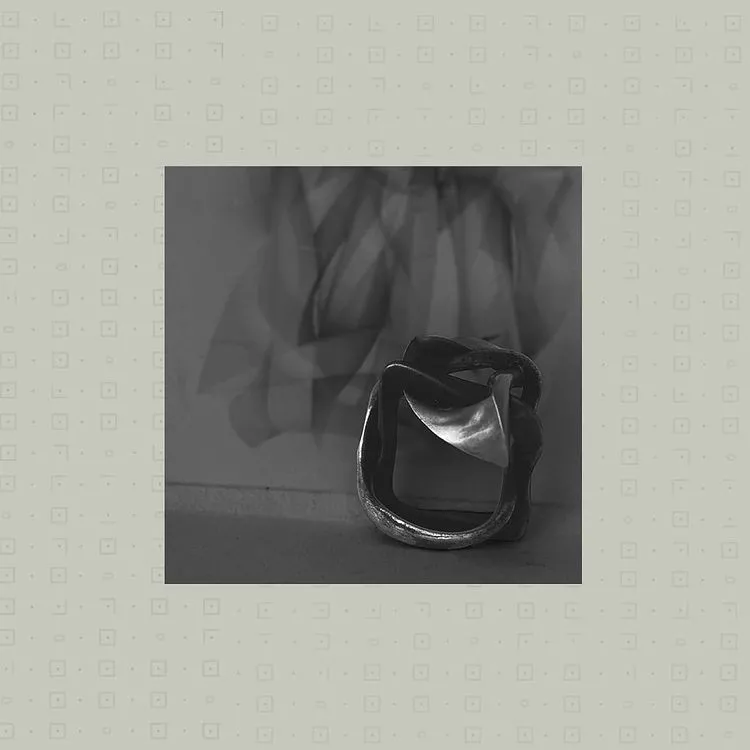
Vnasvista
Prolonged exposure to bright sunlight in the snow without protection can cause snow blindness and damage to the eyes.
For this reason, the Eskimos, who lived in the Arctic for thousands of years, invented “snow goggles”: they were made of wood, bark, metal and walrus/whale bones, etc., in the shape of a long, flat strip, held in place by woven ribs. A slit was left in the centre of the eye to protect the eyes from the sun as much as possible, while focusing on distant scenes, so that you could see further. Snow goggles were the predecessors of sunglasses.
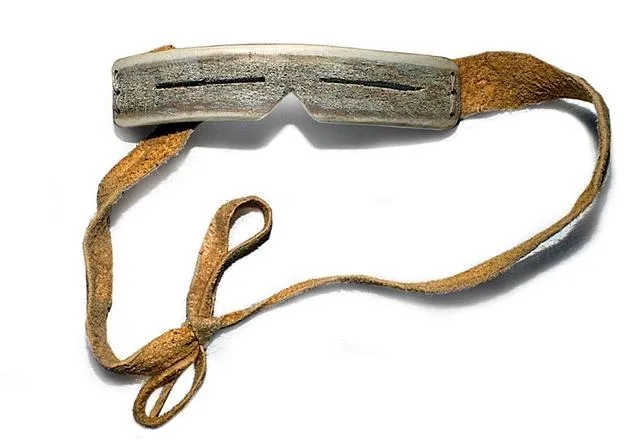
In addition to their function of protecting against the sun’s rays, modern sunglasses are already a tool for pursuing fashion and demonstrating taste, especially the frames. The German brand Lunor is one of the best. The brand was founded in 1991 by antique collector Gernot Linder, who is committed to restoring the aesthetics of the past and abandoning mass production. Lunor glasses are carefully polished by hand by craftsmen to near-zero defect, and some styles use pure gold, pure silver and pure titanium as raw materials. At the same time, Lunor does not reject technological development, and has superb modern electroplating technology, multiple repeated coatings and patented hinge designs. Rimless glasses were Steve Jobs’s favorite during his lifetime.
Gernot’s philosophy is very similar to Altieri’s, and the two collaborated on the Vnasvista eyewear project. Altieri reflects on the visual environment of the masses and abstracts it, combining traditional snow goggles with modern eyewear. The two push-in arms are inspired by the design of antique wooden boxes. When the sunglasses are in sunglasses mode, they protect the eyes through a tortoiseshell snow goggle shell rather than “seemingly non-existent” glass. After removing the shell, it is a pair of oval optical frames made of sterling silver.
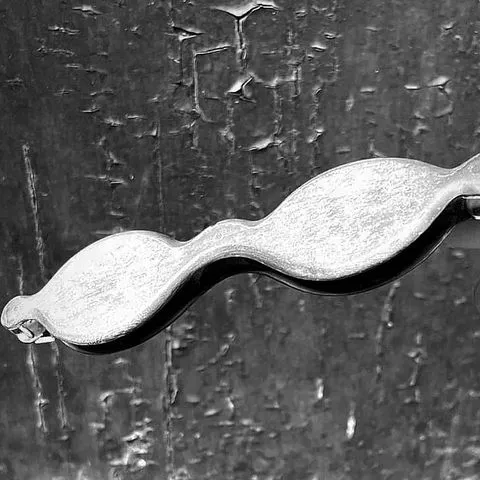
Vnlibrobgn
Vnlibrobgn (Vnlibro bianco, grigio, nero) is in development and has the same naming system as M_Moriabc. With the theme of “books” and based on the one-stroke line of Vnapersona, it transforms the plane into a tangible “book cover”.
Vnlibrobianco (a blank book, referring to the past): the physical unfolding of the paper Vnlibrobianco results in an irregular plane, which is only given as a gift to friends and family.
Vnlibrogrigio (a grey book, referring to the present): finds its way of being in the craft. The participating craftsmen can find their own interpretation of the object and adapt the existing design by using different materials and processes. The current version is made of leather.
Vnlibronero (a black book, referring to the future): It wants to subvert its original function, focusing on its compositional nature, and hopes that it can carry different visual media, both as a two-dimensional model of a plane and as a three-dimensional object that can be used as a movable installation platform.
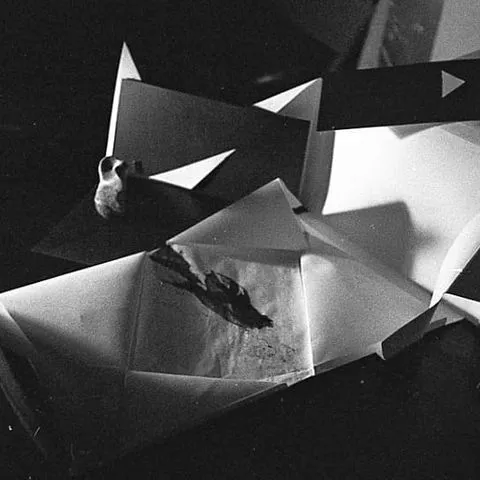
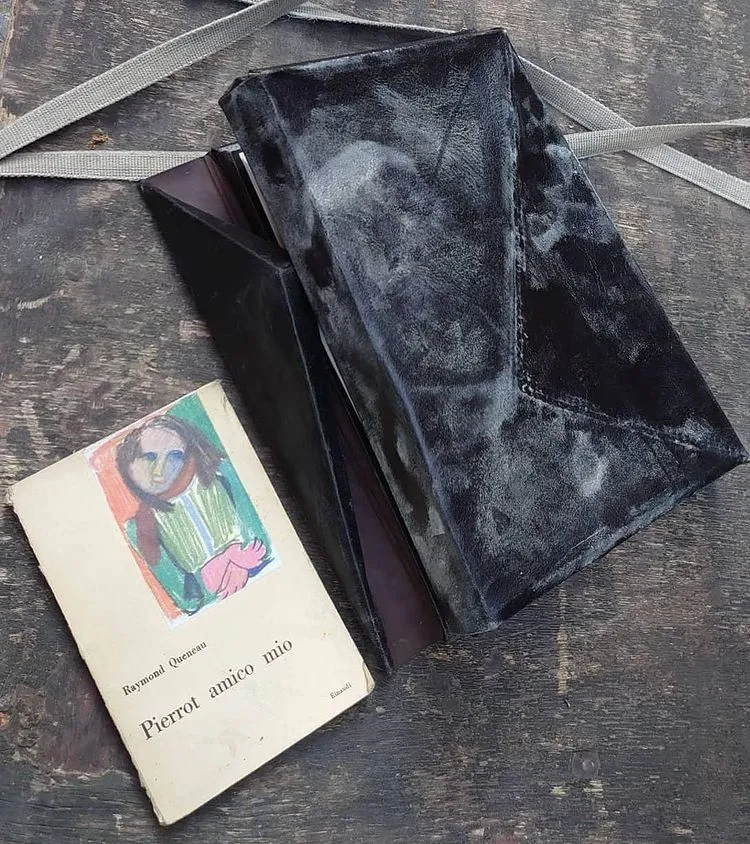
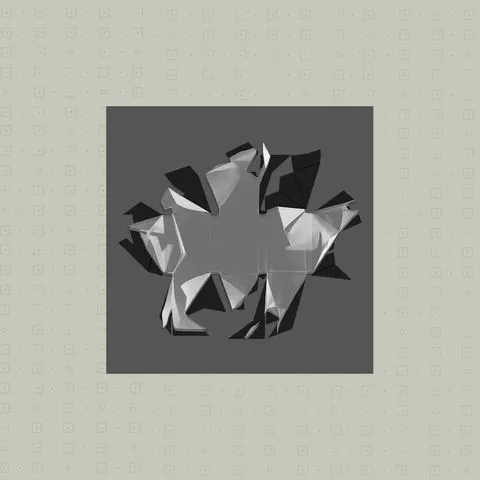
Shoe model:
Vnora
There are two ways to continue the M_Moriabc path in shoe models: one is M_Moriabc rev, which controls costs and attempts mass production, and the other is Vnora, a completely handmade footwear project that destroys the original M_Moriabc shoe last and remakes it. The “ABC” classification of shoe lasts is still used.
The insole is filled with shredded coconut to enhance comfort, the sole is hand-sewn and reinforced with brass nails, and the new B-series soles have a transverse depression in the forefoot.
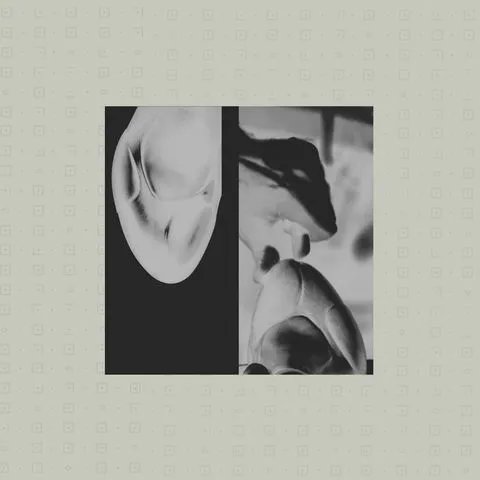
Vncontatto and Vnciclolabile
“Perhaps it was a long time ago, after I returned from Russia, that I walked barefoot in my city of birth (Rome) for about a year, walking on eggs, which is where it all began.” The raised front and heel contact with the ground, as well as the curved lines of the arch when viewed from the side, Altieri often describes the connection between the feet and the earth as ‘Egg’.
With the main theme of “reimagining the nature of walking and analyzing the important interface between the foot and the ground,” he first created the “walking tool” Vncontatto, which is different from conventional shoes in that it has an ovoid sole and an ovoid hollow at the arch of the foot. It requires balance like a tightrope walker, like a kind of tension that wraps around the rope itself.
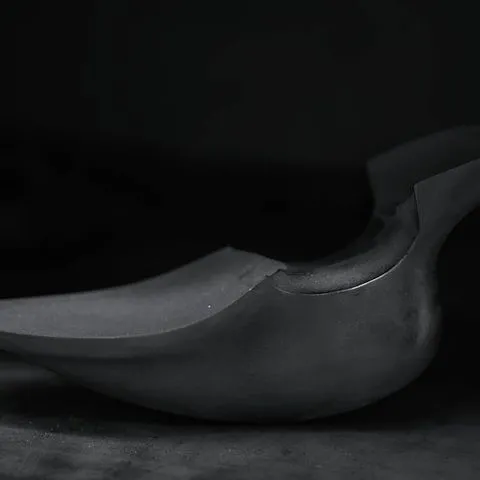
Vncontatto women’s model: single egg-shaped cut-out at the arch of the foot, in different versions over the years with vegetable-tanned leather uppers and soles made of cast aluminum, resin or antique walnut wood.
Vncontatto men’s model: three ovals on the front and back of the foot and the arch, with a resin or plasticine sole and a removable inner egg made of wood and magnets.
Vnciclolabile: replace the Vncontatto upper with a second-hand sports shoe from the 1970s. The egg-shaped sole is replaced with a vulcanized part of an old bicycle tire that has been partially assembled by deforming it through a mould with a certain amount of silicone.
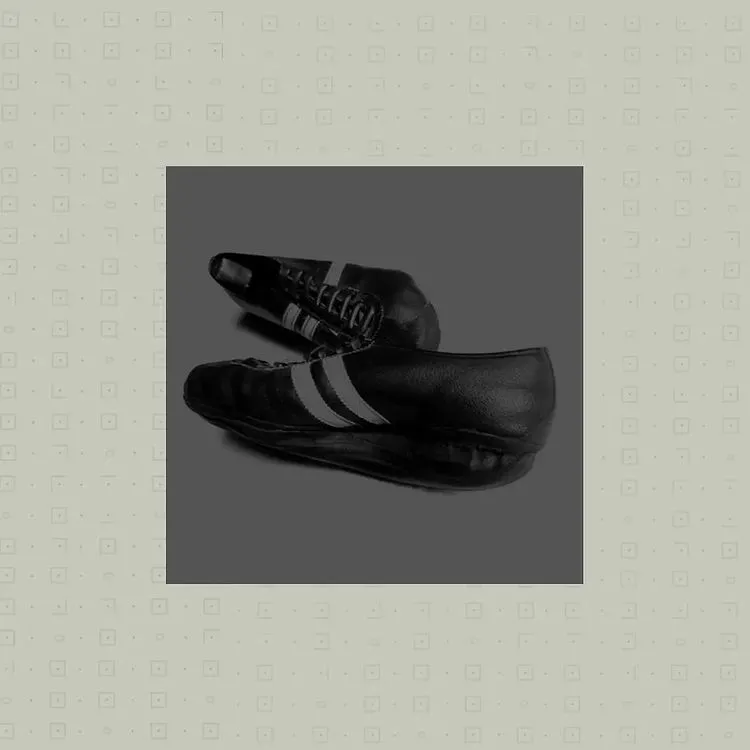
“An oscillating contradiction, a walking suspension, a collective escape from the logic of gravity.” Each human foot has 26 bones, 33 joints, 20 muscles of different sizes, 114 strong ligaments, countless sensitive nerves and rich blood vessels.
The structure of the foot is exquisite and can be described as an anatomical miracle. After putting on Vncontatto and Vnciclolabile, the entire body works together to facilitate movement in our feet. Between balance and imbalance, more than 200 muscles in the whole body pull us forward together to take a step, so that we can feel this “miracle” with our feet.
ink
Maurizio Altieri
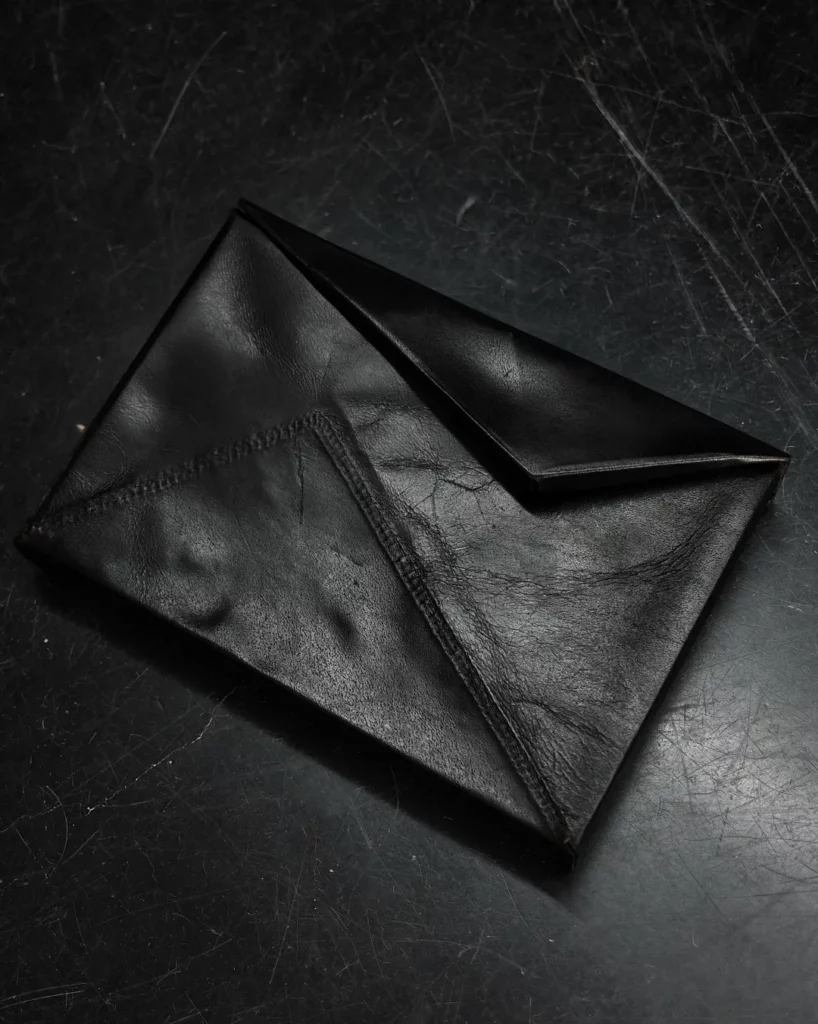
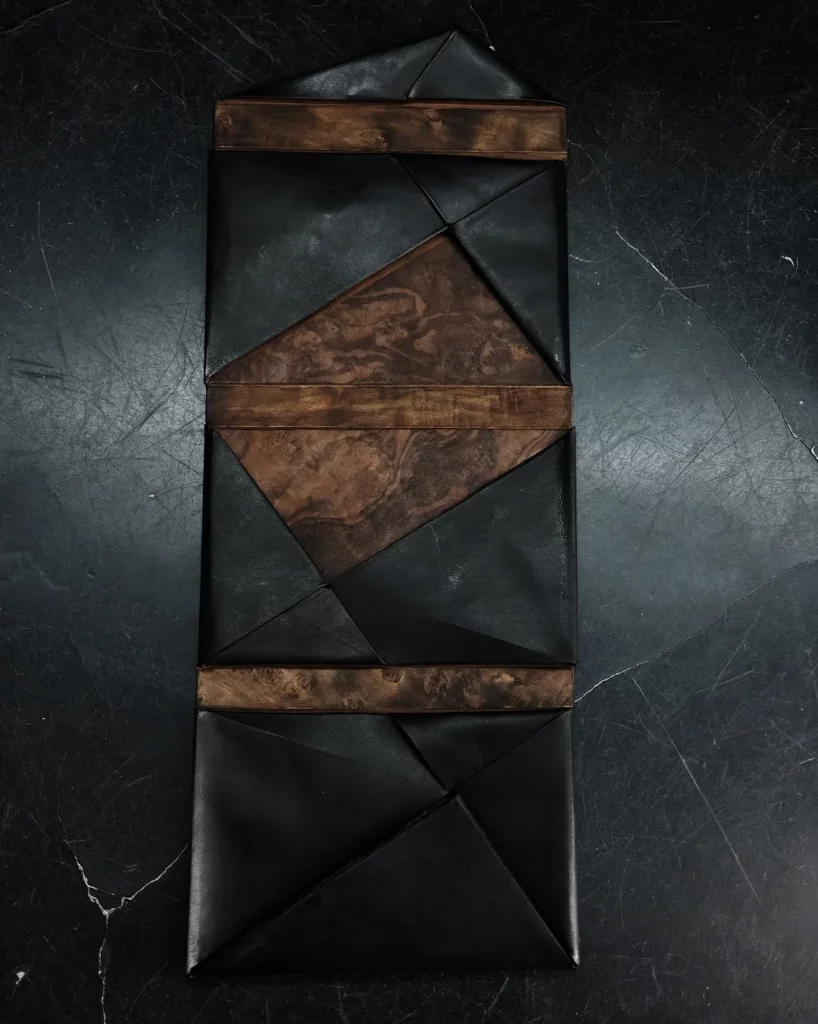
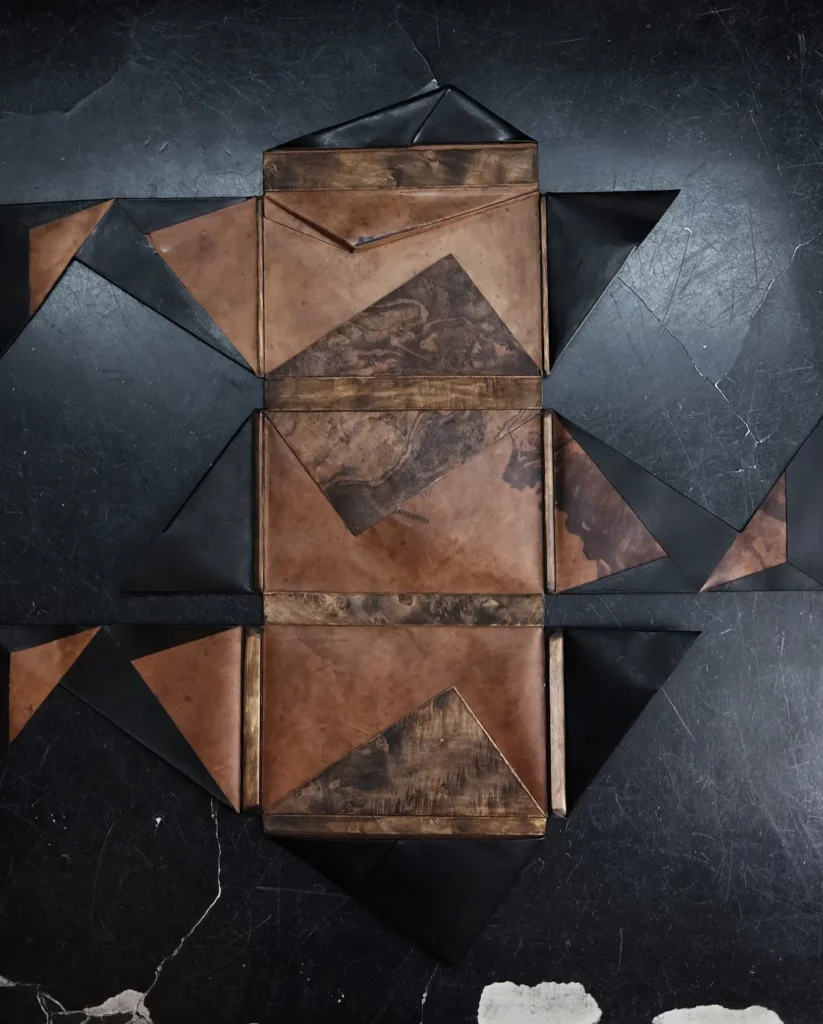
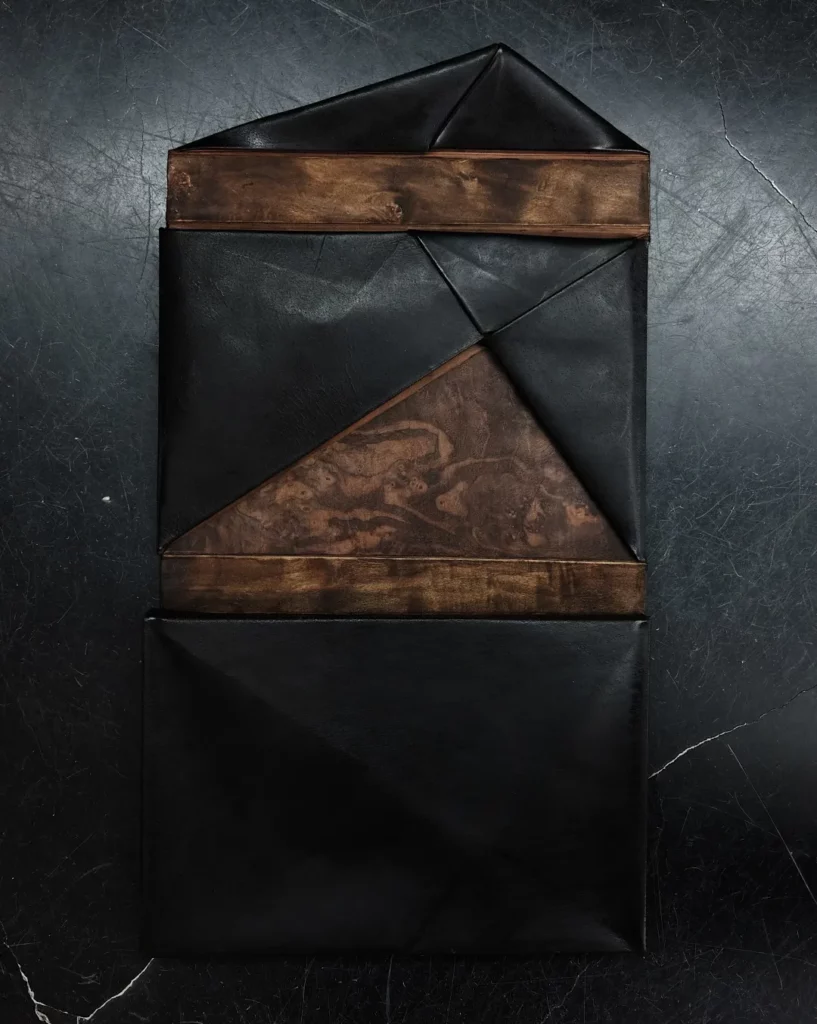
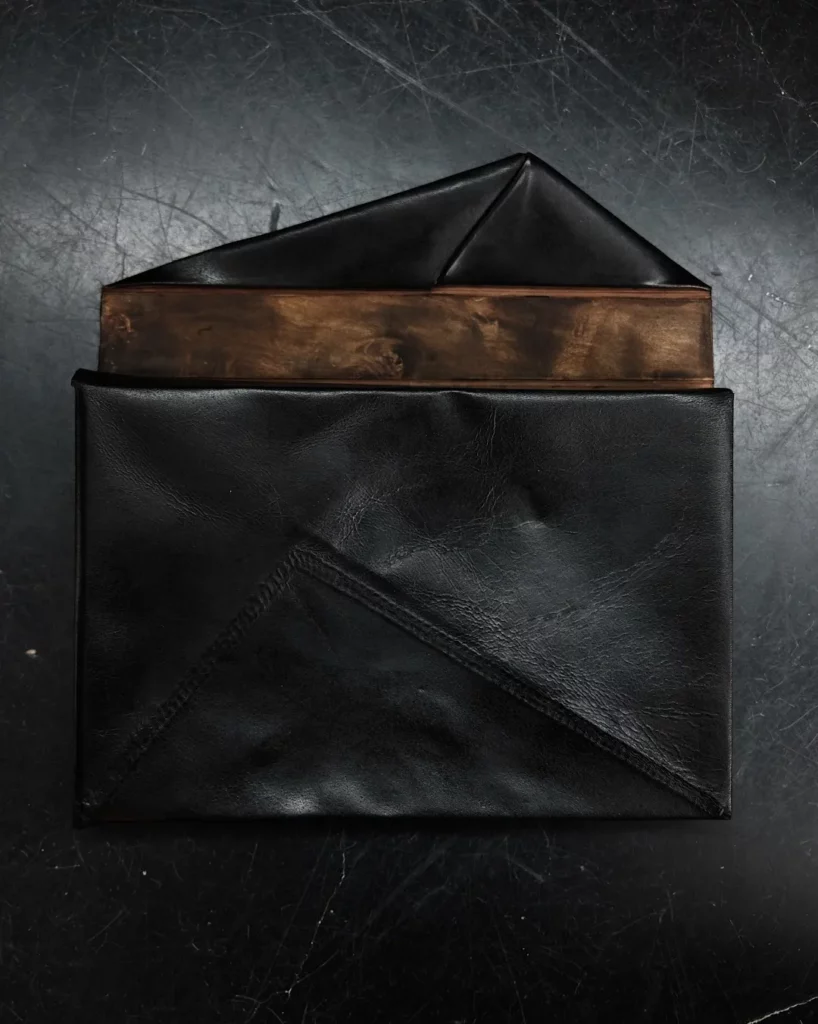
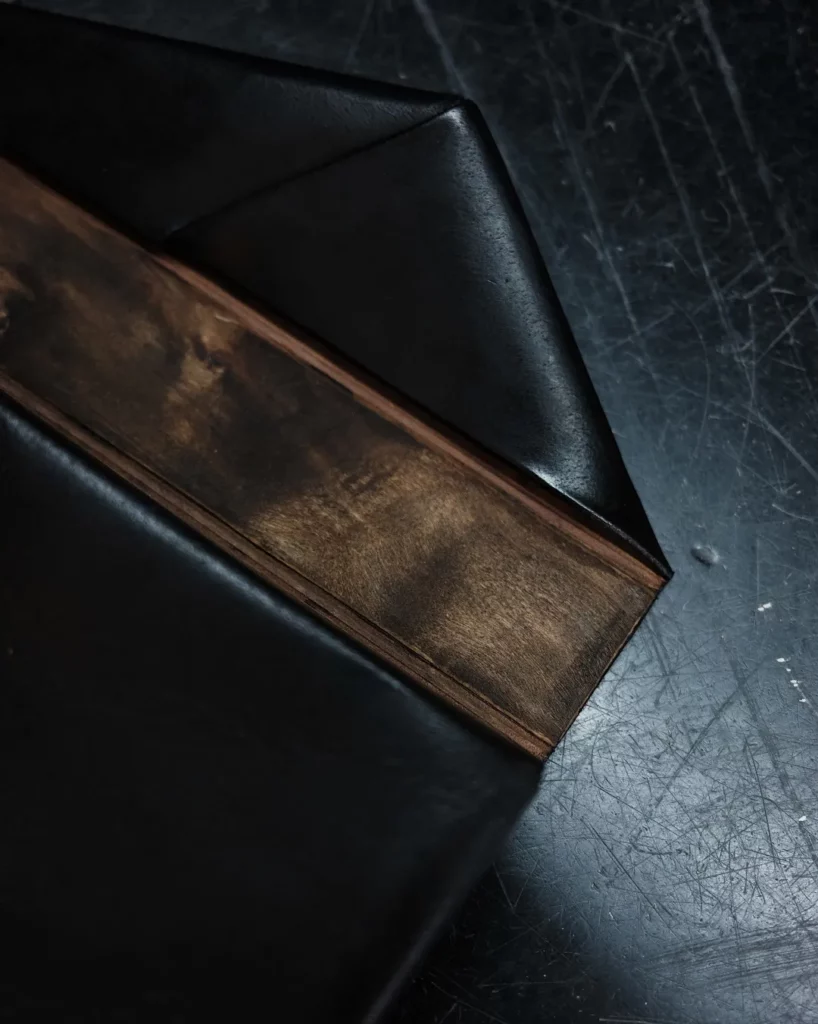
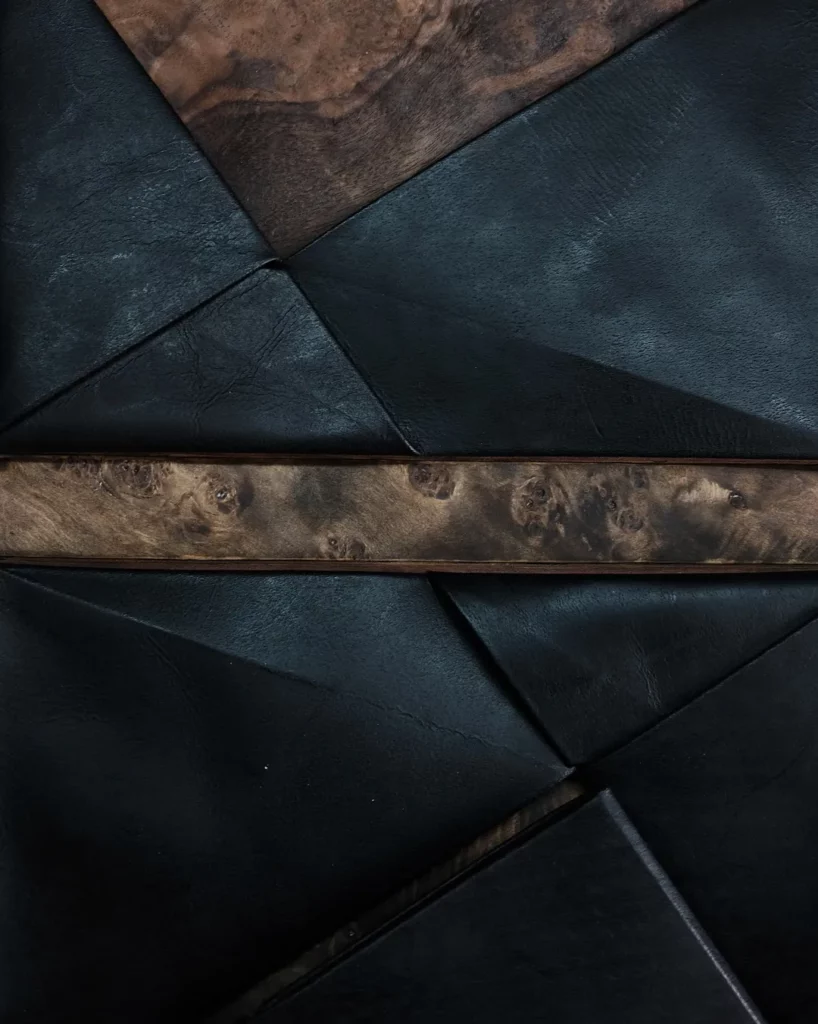
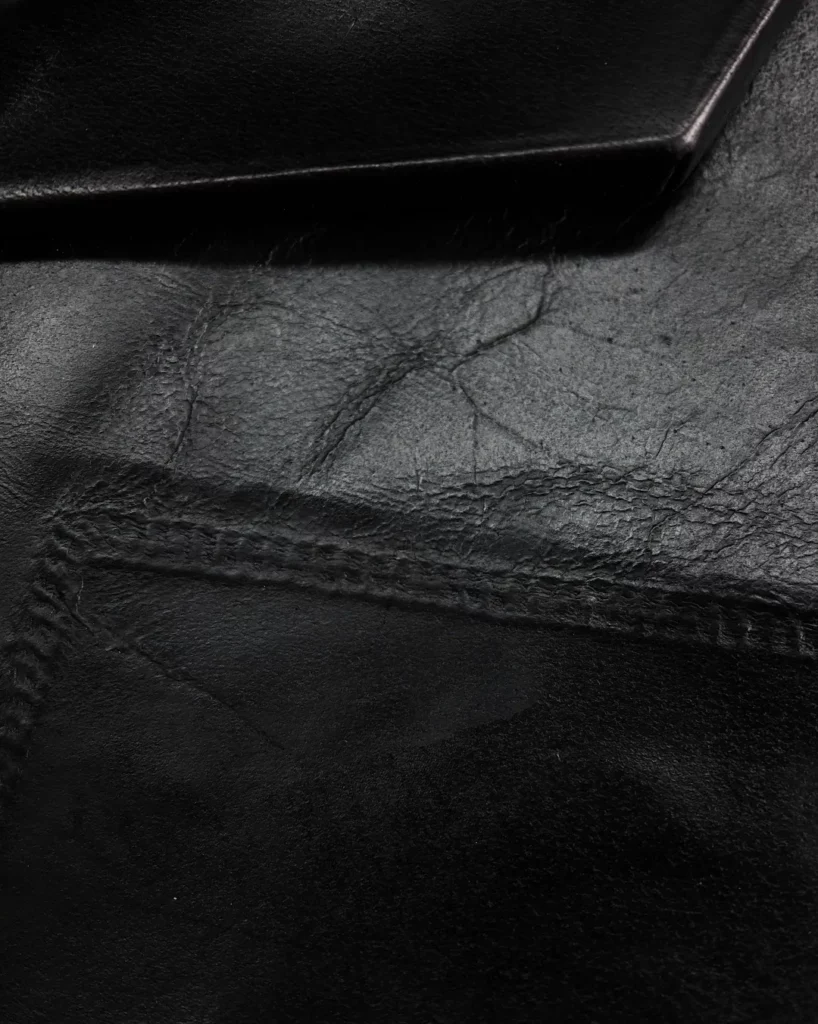
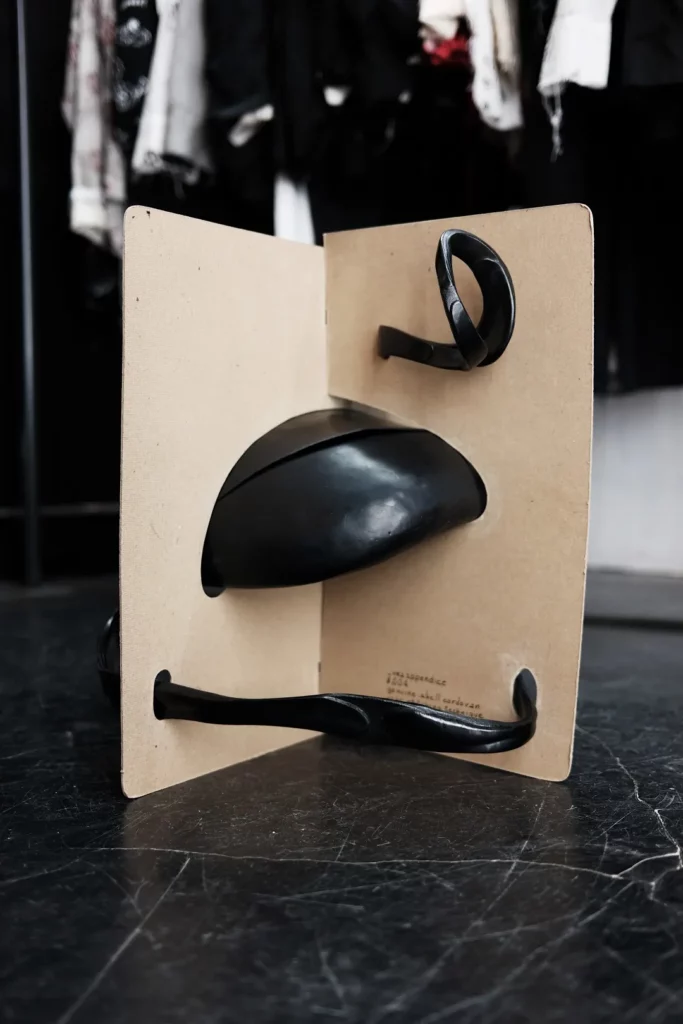
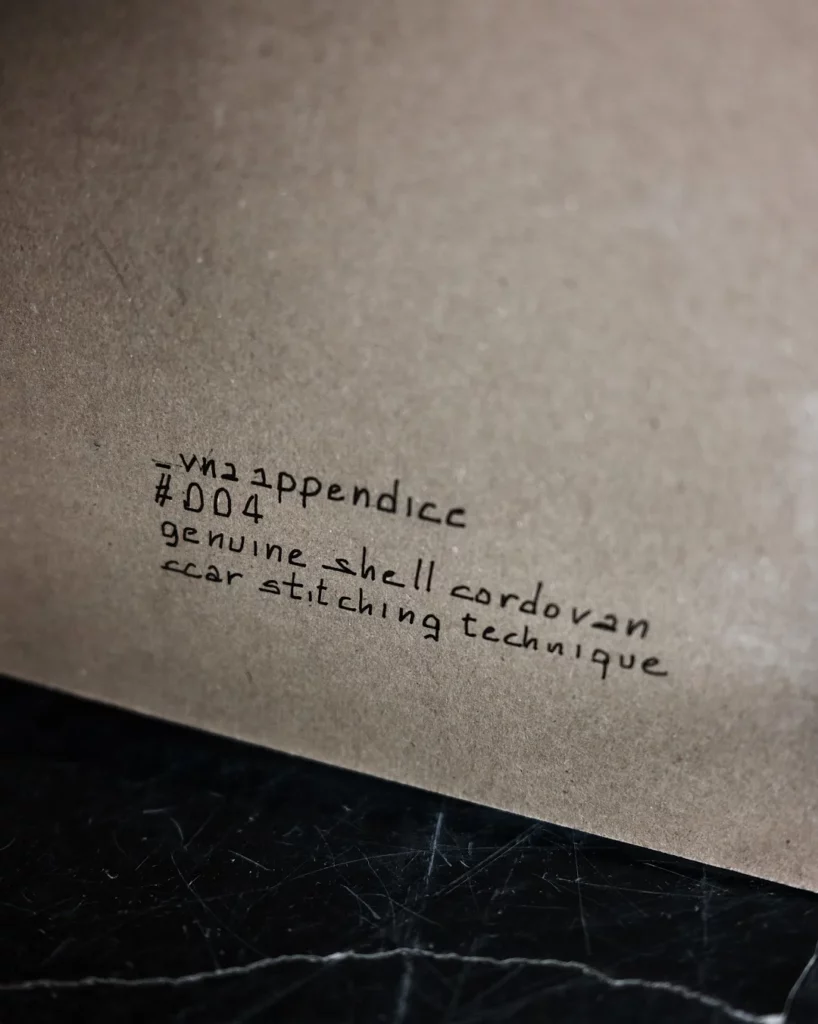
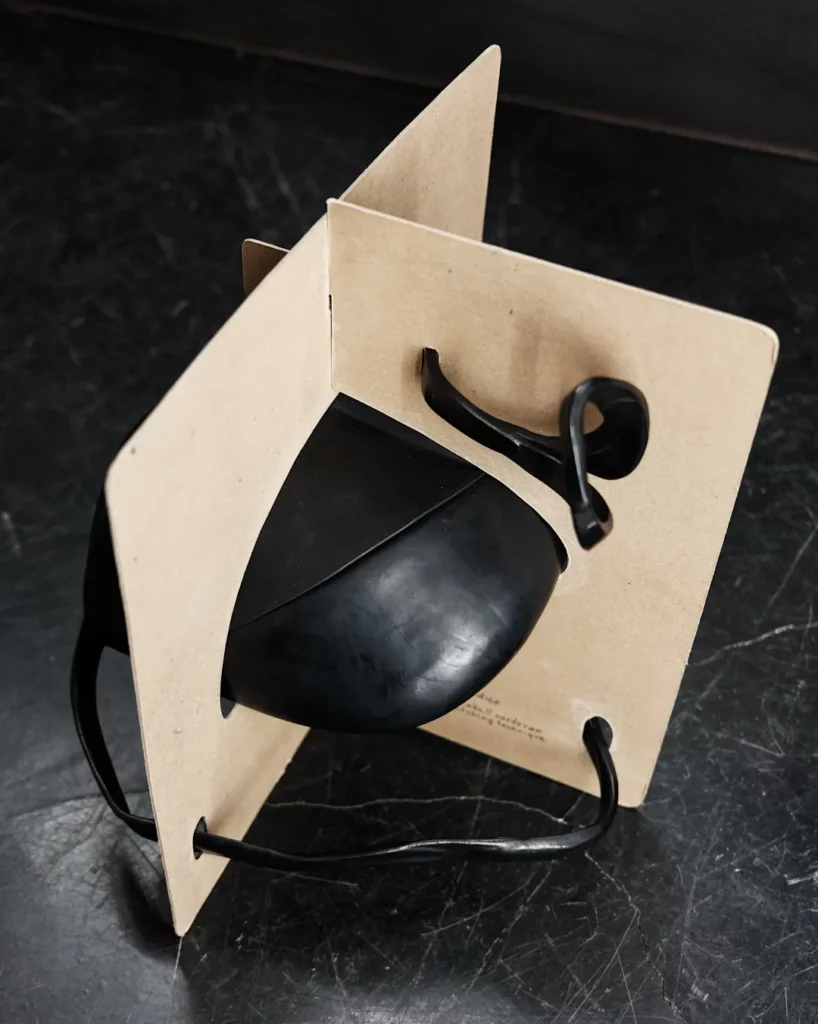
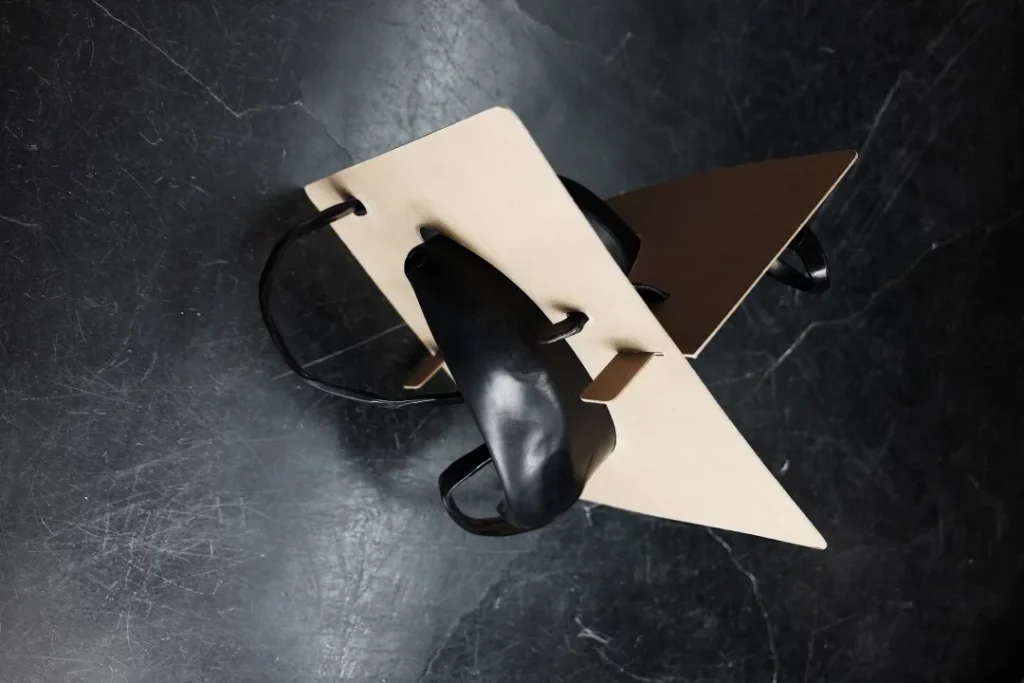
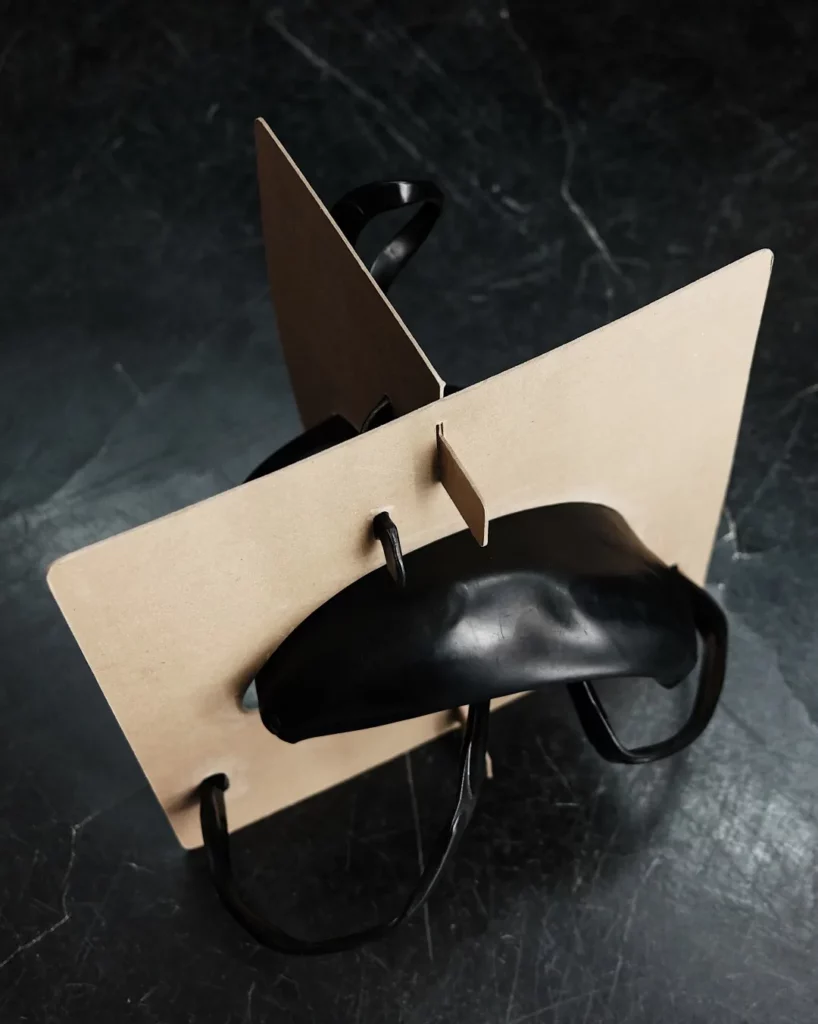
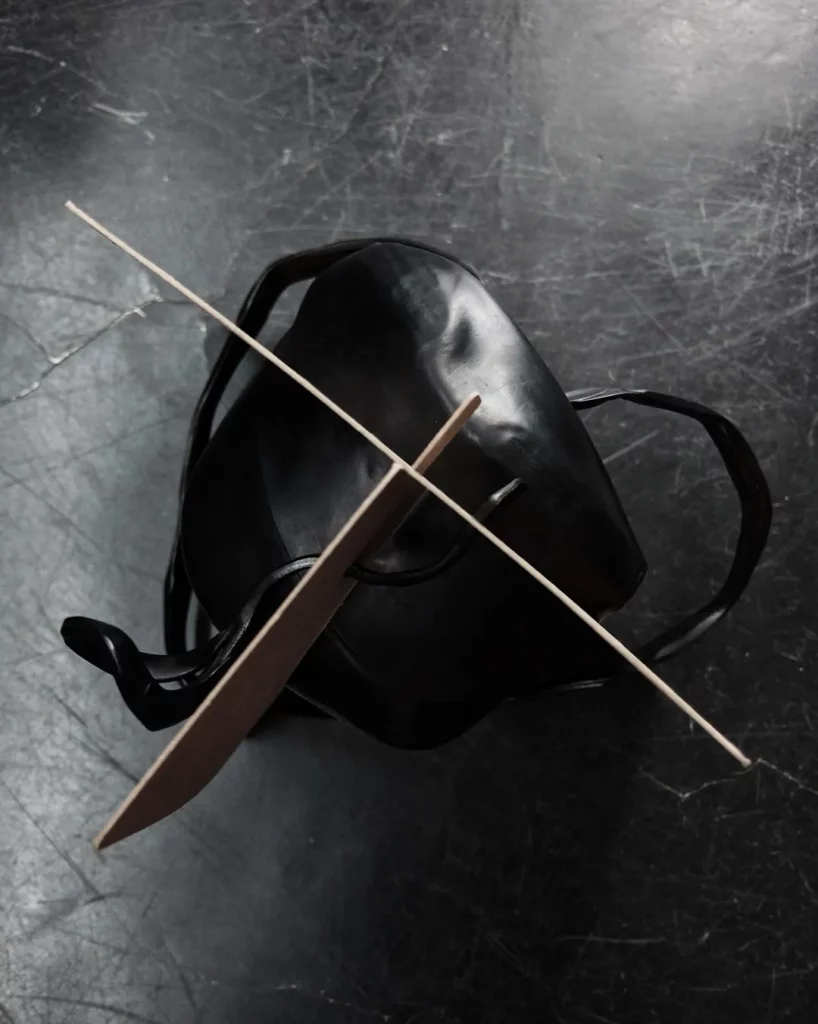
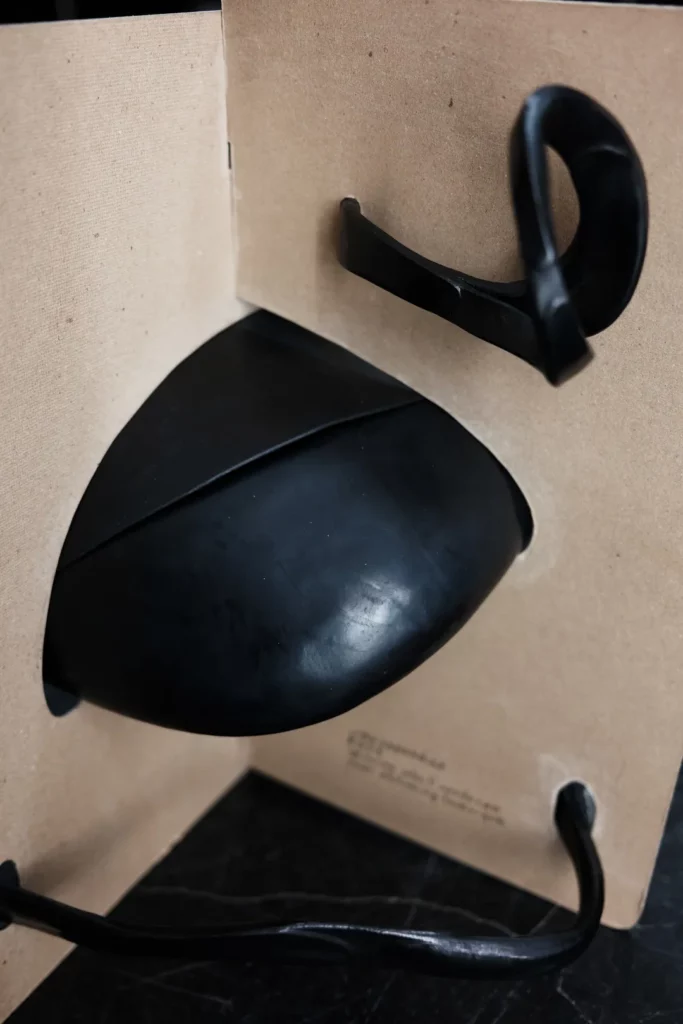
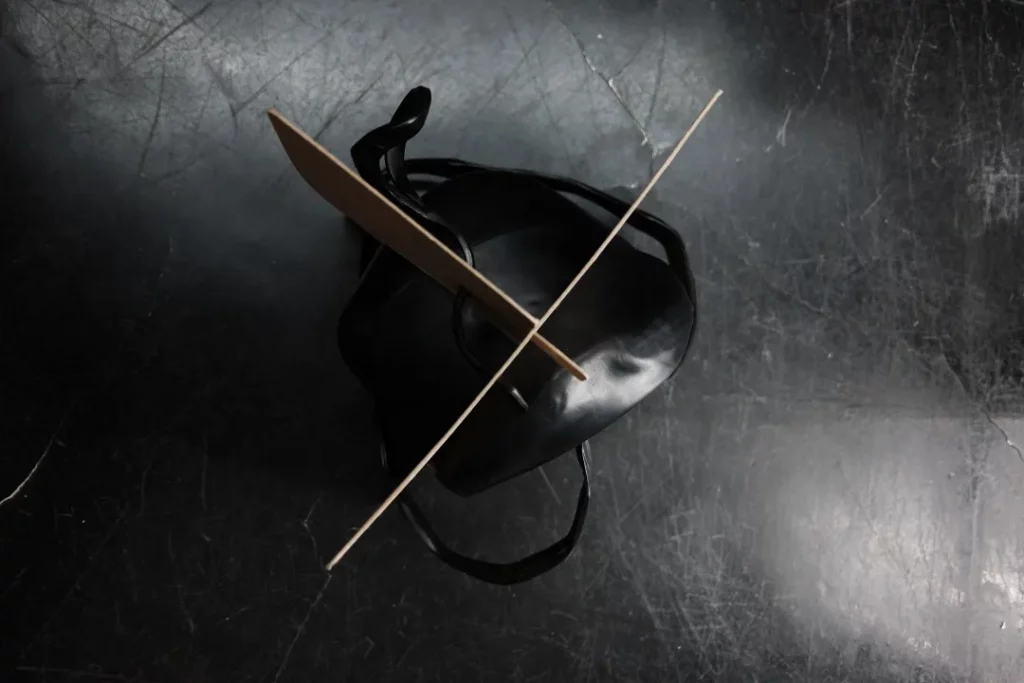
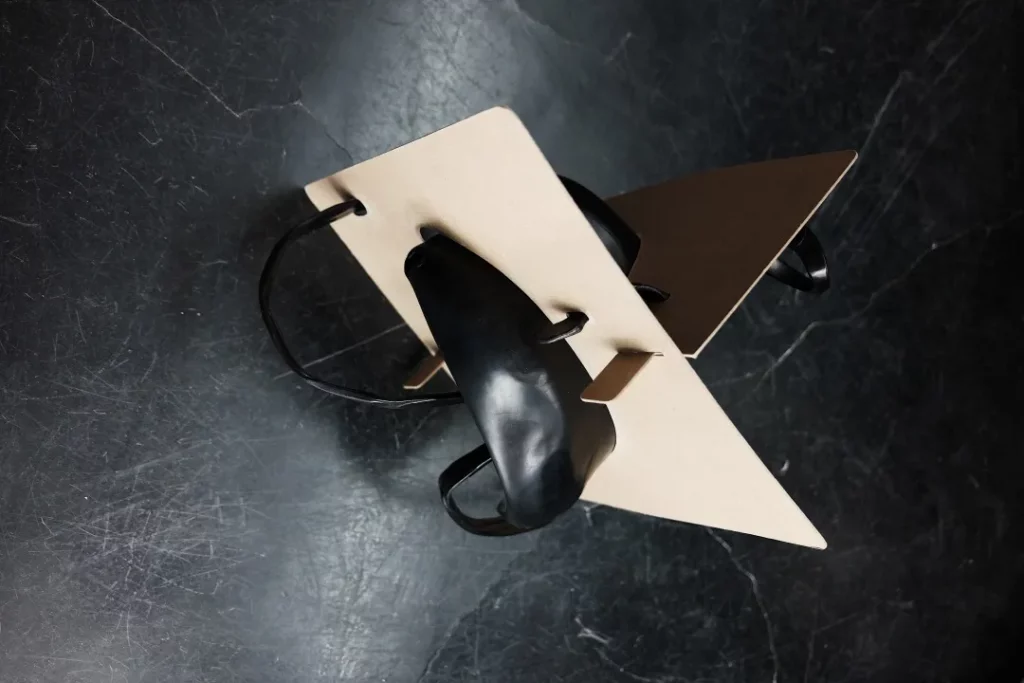
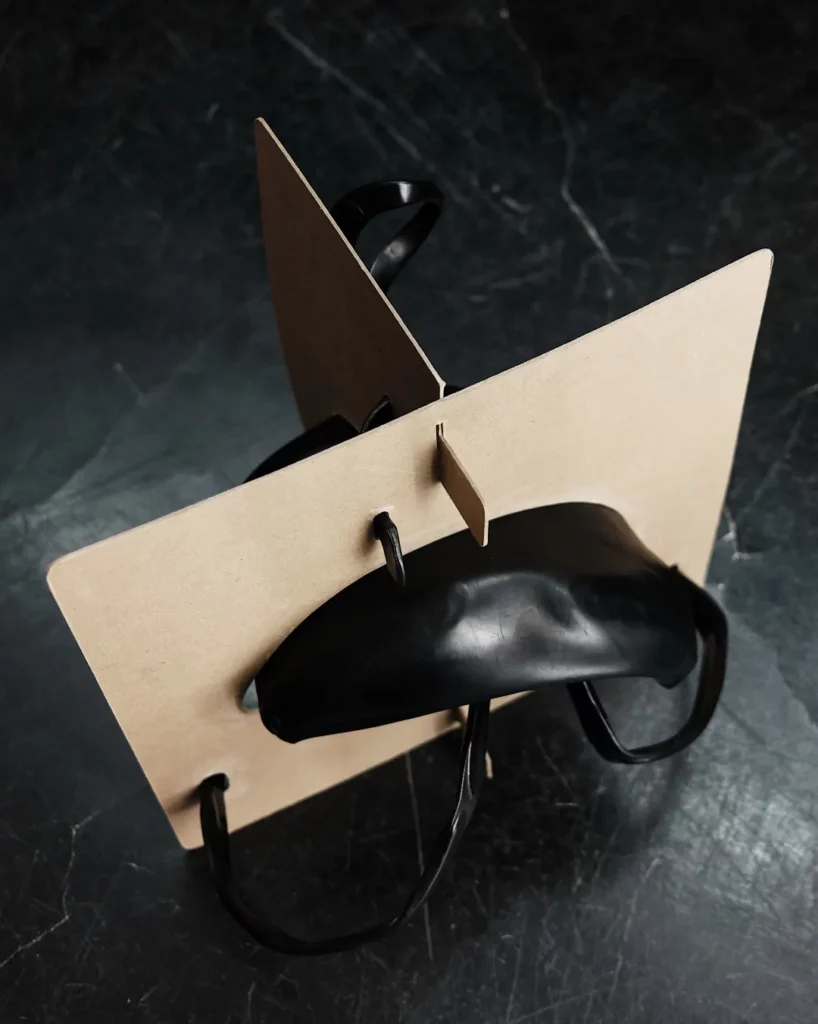
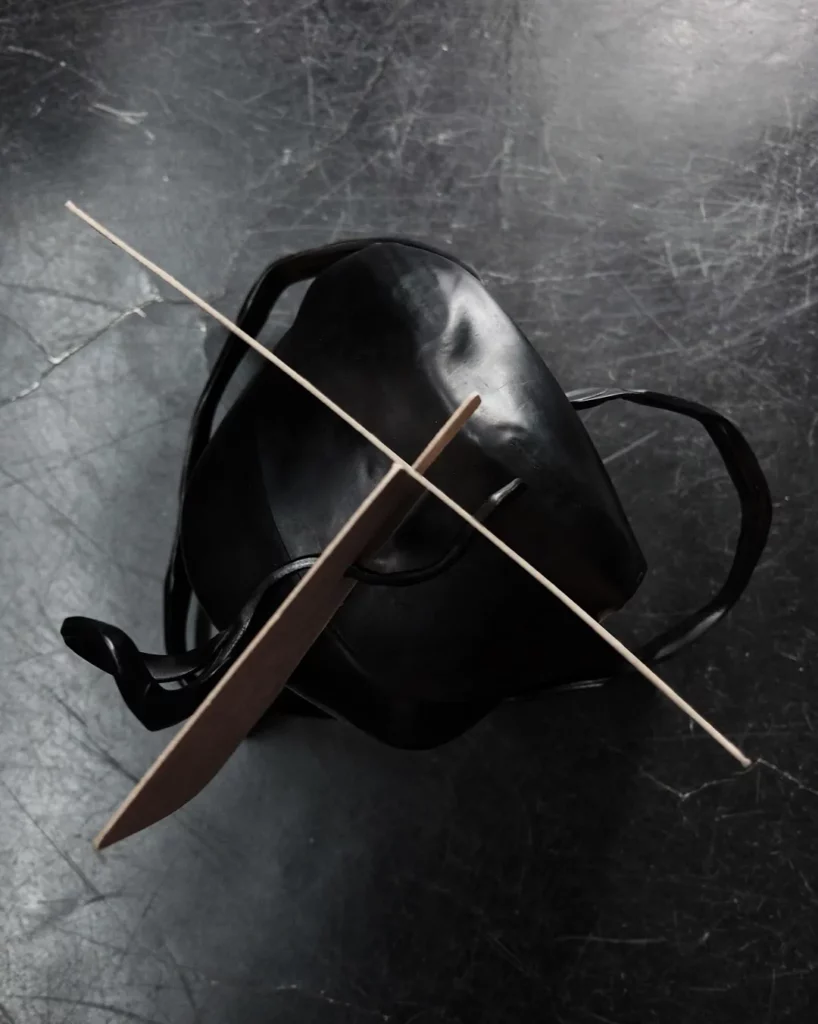
Editor: Mascarar

